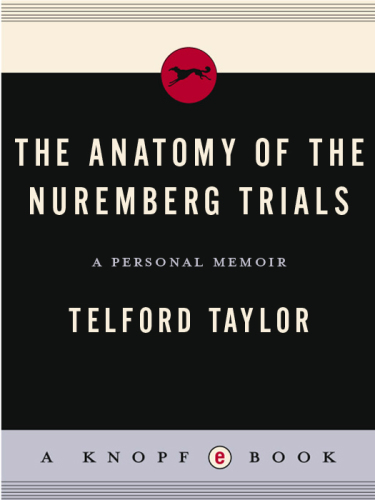
The Anatomy of the Nuremberg Trials
A Personal Memoir
کتاب های مرتبط
- اطلاعات
- نقد و بررسی
- دیدگاه کاربران
نقد و بررسی

September 28, 1992
The chief prosecutor of the four-power Nuremberg trials (1945-1946) delivers the ultimate insider's account of the war-crimes prosecution of surviving Nazi leaders. A National Book Critics Circle Award winner for Munich: The Price of Peace , Taylor explains how the Allied governments established the legal basis for the tribunal and organized the courtroom proceedings. He introduces the defendants--Goring, Hess, Ribbentrop, Speer et al.--defines the charges against them, outlines the evidence and recounts individual defense strategies, closing arguments, judicial sentences and (in the case of those condemned to death) the details of their executions. Taylor casts doubt on the legality of the charges against Nazi publisher Julius Streicher and argues that Rudolf Hess, mentally incapable of defending himself, should not have been tried. (Incidentally, he clears up the intrigue surrounding how former Luftwaffe chief Hermann Goring managed to conceal the cyanide capsule with which he committed suicide.) This gripping eyewitness report of an unprecedented international military tribunal is the definitive work on the subject. Photos.

October 15, 1992
Taylor's prosecutorial task at the Nuremberg proceedings in 1946 was to prove the criminality of Nazi organizations. Beyond recollecting his personal performance, he elucidates the origin and operation of the proceedings that sketched exactly what does, and what does not, constitute an international crime. Maintaining, as Taylor does, that breaking treaties or broadcasting anti-Semitic bile is not per se a war crime seems to split hairs, but the trial, to be persuasive, had to give the defendants a fair hearing; hence, verdicts ranged among acquittals, jailings, and hangings. The leniency didn't please the hypocritical Soviets, who in a sense were judging their moral peers. In addition, Taylor advances a new theory explaining how the number two Nazi, Goering, cheated the executioner two hours before the appointed time. When a unique trial has been trivialized by people citing its example without any grounding in the facts, a systematic chronicle of Nuremberg makes good sense for long-term collection development ((Reviewed Oct. 15, 1992))(Reprinted with permission of Booklist, copyright 1992, American Library Association.)

























دیدگاه کاربران